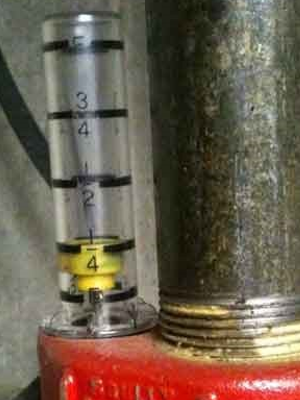In an oil-heated home, nothing is more important than making sure you don’t run out of heating oil. Even if you pay a premium for Automatic Heating Oil Delivery, it’s important to occasionally check your home heating oil tank to make sure you do not run out. In this post, we’ll walk through the nuances of reading a typical float-style heating oil tank gauge and introduce some alternative ways of monitoring your fuel oil tank.
How to Read a Float Gauge in a Heating Oil Tank
Most fuel oil tanks come with a traditional float-style gauge. This fuel oil tank gauge features an arm with a float attached to its end, and a hinge. There is a plastic vial with a disk that indicates how full the heating oil tank is. As the float lowers, so does this disk. For a detailed breakdown of how an oil tank works, check out our blog post how an oil tank works here.
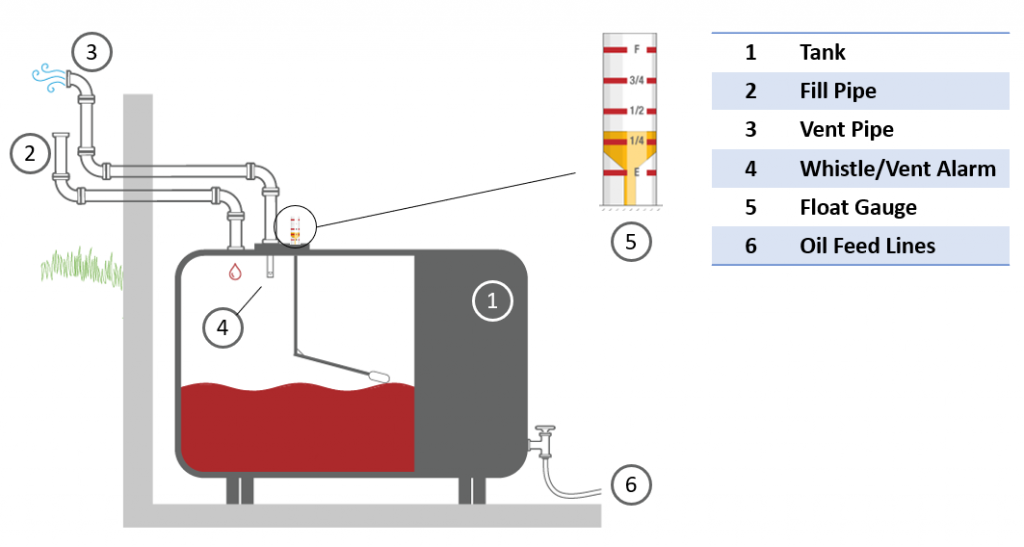
To read the level of a float gauge, look for the tick marks on the plastic vial. These typically indicate Full, 3/4, 1/2, and 1/4. Because the home heating oil tank is rounded at the bottom, these gauges are not very accurate when the tank is low. As a good rule of thumb, always order heating oil online at around 1/4 full. This gives you a few days for the oil to arrive before running out.
Note: Some ‘experts’ say you should look at where the top of the disk lines up with a tick mark, rather than the bottom. These float gauges are nowhere near precise enough to make such a distinction, so just look for where the middle of the disk lines up with a tick mark to determine the level.
Multiply the level shown by your fuel oil tank size to approximate how much heating oil is in the tank. For a 275 gallon tank, 1/4 full is approximately 0.25 * 275 = 69 gallons. For a 330, 1/4 full is approximately 0.25 * 330 = 82.5.
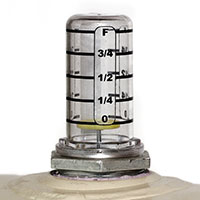
How Accurate is a Heating Oil Float Gauge?
Since these are not precision heating oil tank gauges, they should only be used as an approximation of how full a tank is. Because of the moving parts inside, these can also be prone to wear over time. If you suspect your heating oil float gauge is stuck, simply unscrew the plastic vial by hand. Use your finger to press the disk down. If the gauge is not stuck, the disk should easily move down, then slowly float back up and remain up, indicating the arm is moving freely.
One of the ways a heating oil float gauge can get stuck is by simply rotating inside the fuel oil tank. This can happen over time, and the result is the float is wedged against the side of the tank, unable to move.
Another problem that can arise is the float itself becoming less buoyant over time. As seen below, the float can develop sludge that prevents it from floating on top of the oil.
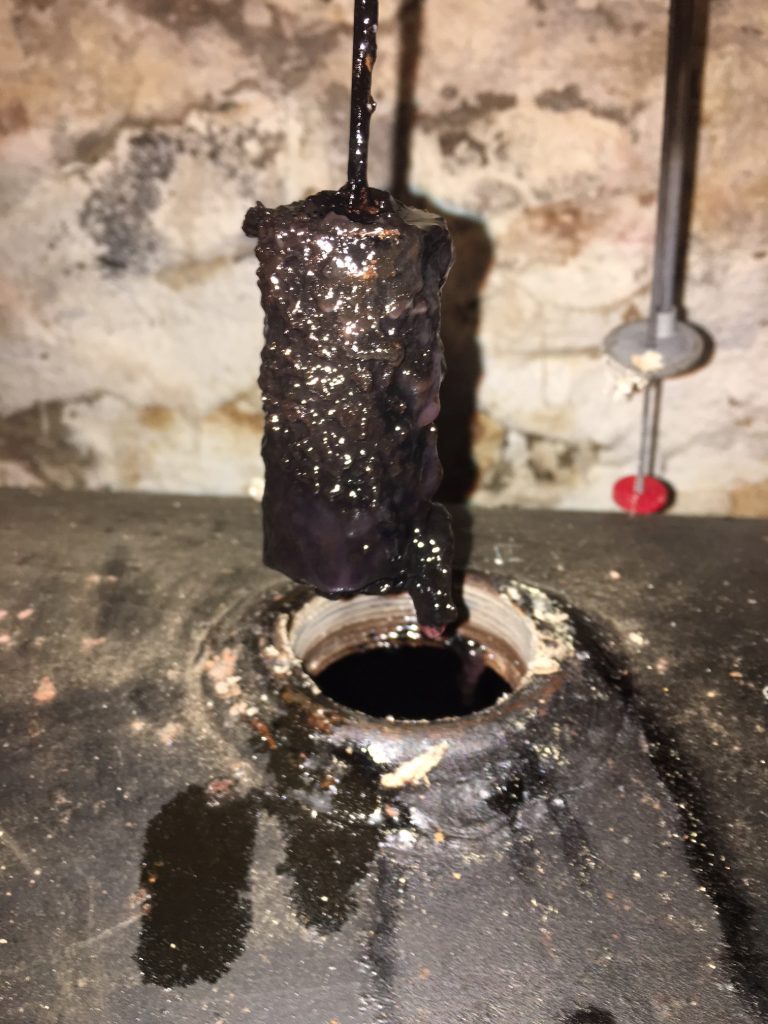
How Much Heating Oil Should I Order and When?
Once you know how much oil is in your tank, you’ll need to figure out how much to order. Use the guide below to determine how much oil your tank can take.
Amount to Order = Tank Capacity – Current Level
For a 275 gallon vertical heating oil tank, the max capacity is 250 gallons. The reason it is not 275 gallons is because there is always an air space left at the top of the tank after a fill. This allows the oil to expand in the fuel oil tank and prevents the tank from being over-filled.
If your 275 gallon vertical heating oil tank is 1/4 full, we know that 275 * 0.25 = ~69 gallons.
Amount to Order = 250 – 69 = 181 gallons or fewer. An order of 150 gallons, in this case, should easily fit in the fuel oil tank.
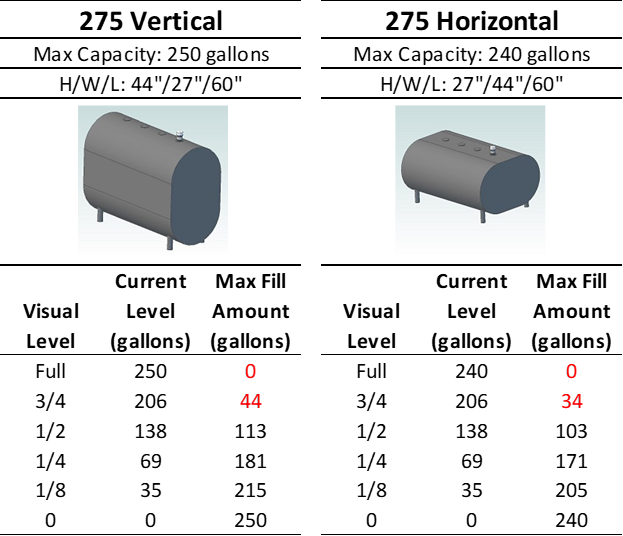
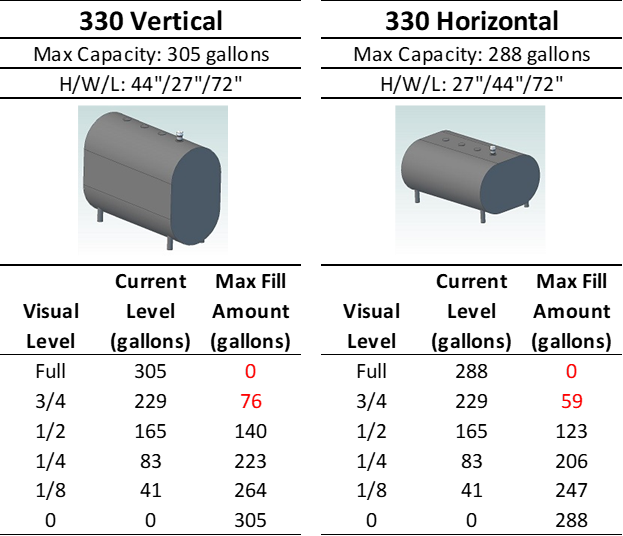
By using the above guides, you should be able to determine when to order heating oil for your home. Find the best and cheapest heating oil dealers near you with FuelSnap to avoid being overcharged by local oil companies!
What if I Want to Order 200 Gallons?
Since many dealers offer a discounted price for 200 gallons, you may be tempted to wait until your tank is lower that 1/4 full to order. This can be risky with a float gauge, as they are notoriously inaccurate when the fuel oil tank is that low. Instead, we recommend two options if you would like to get your tank that low:
- A Smart Oil Gauge. This will report your oil level to within a couple of gallons. The Smart Oil Gauge knows the specific geometry of your heating oil tank as well. As such, it can account for the rounded edges and the reduced amount of oil in the bottom of the tank.
- A yard stick. Using a yard stick to measure the specific number of inches of oil in the tank will give you a good idea of how much oil is in the tank. This is obviously cumbersome, but much more reliable than the float gauge. Once you’ve measured the level, in inches, check it against a tank chart to determine the level.
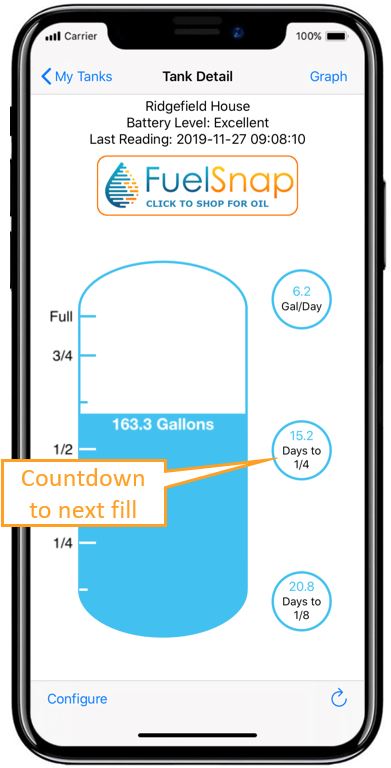
How Much Heating Oil Will I Use in a Day?
This is a great question to be asking yourself as you plan your next heating oil order. The first factor is whether you are using oil for heat only, or heat and hot water. If you are using heating oil for hot water, you will continue to consume oil year-round. Your usage may be reduced to 1-2 gallons per day in the summer months, and as high as 6 or more gallons per day in the winter months. This depends on the size of your house, how well-insulated it is, and other factors. The age of your heating system and keeping it well maintained are also contributing factors.
The only good way to know how much oil is used on any particular day is by installing a device like the Smart Oil Gauge. The Smart Oil Gauge uses an ultrasonic sensor to measure the oil level every hour. It then graphs this data over time, giving you usage statistics.
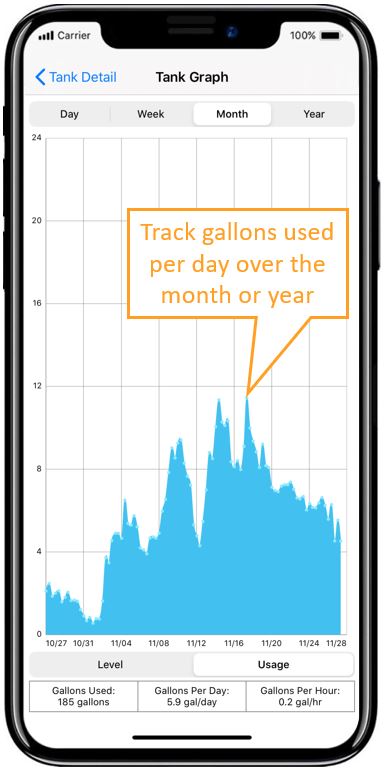
Use the Float Gauge to Approximate Your Heating Oil Tank Level
Now that you understand how to read a float gauge, don’t forget that it is only an approximation. For a precise tank level when the tank is low, consider a Smart Oil Gauge or using a yard stick. Both of these options will give you a much better indication of the tank level. When you’re ready to order heating oil, check out a site like FuelSnap to make sure you’re getting the best deal possible on heating oil.
Happy heating,
Steve

